[et_pb_section admin_label=”section”][et_pb_row admin_label=”row”][et_pb_column type=”4_4″][et_pb_text admin_label=”Text” background_layout=”light” text_orientation=”left” use_border_color=”off” border_color=”#ffffff” border_style=”solid”]
I’ve been putting off this post for awhile. It’s a lot. A lot of thinking, writing, photographing and, perfectionist that I am, I want to get it all right.
I kept trying to figure out how to organize it in a way that would both make sense and be helpful to you as you begin to block out a garden plan. Oftentimes plant selections are organized by bloom time or whether or not they’re a perennial or annual. Helpful information, yes, but it doesn’t help you know where you’re going to actually put said plant. So, I decided to organize and focus here on basic know-how in terms of types–annual vs. perennial. And then from there, discuss where to put plants in a border garden, based on their height: front of the border (the shorties), mid-border (average height), and back of the border (the tall kids).
Annuals, Self-sowing annuals, & Perennials: What you need to know
Annuals: These must be replanted every year–think sweet alyssum, hybrid petunias, and others similar types of plants.
Self-Sowing Annuals and Biennials: This category is a bit tricky–most often, however, self-sowing annuals die (the original plant, that is) but reseed themselves. Their progeny shows up the following spring. Some common ones include Johnny Jump-ups, Feverfew, Calendula, Borage and others. Biennials are similar to self-sowing annuals but follow this pattern every two years, rather than every year. Check out this post for additional information. One of my favorite self-sowing annuals in the herb borage: its delicate, cornflower blue flowers attract the so important honeybee.
Perennials: These, in theory, come back every year. Know, though, that some perennials are more hardy or adaptable than others. One of my favorites, for both its fragrance and showy blooms, is the peony.
Back of the border: Relatively self-explanatory, I think. The tall plants belong in the back; you know, kinda like in choir or in the dreaded extended family picture, people are arranged by height. Tall kids in the back. Same goes for plants. The lovely delphinium is both the quintessential cottage garden and back of the border garden plant.
Mid-border: To continue with my photo analogy, these plants (18”-30″) are analogous to the people of average height: Peony, Feverfew, Shasta Daisy, Lady’s Mantle, Yarrow, and others are excellent mid-border plants. Feverfew, below, is a wonderful, interestingly fragrant mid-border plant.
Front of the border: The shorties. Pinks, Sweet William, Soapwort, and others are the shorties in the garden. You put a shorty in the front. : ) Here are some shots of dianthus, one of my favorite “front of the border” plants, just because I love it.
Next up: My favorite plants plus a description that includes both type (annual, self-sowing annual, or perennial) and placement (back, mid, or front). Interested in reading other posts in the series? Find them here: Entry # 1, Entry # 2, Entry # 3, Entry # 4, and Entry # 6.
Till next time!
[/et_pb_text][/et_pb_column][/et_pb_row][/et_pb_section]

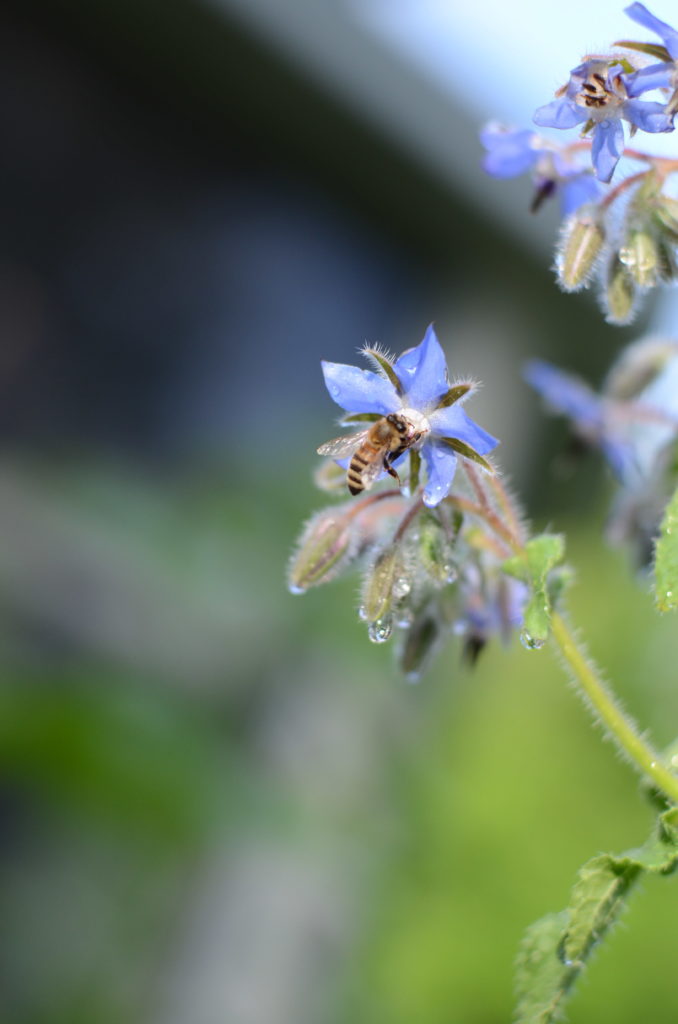
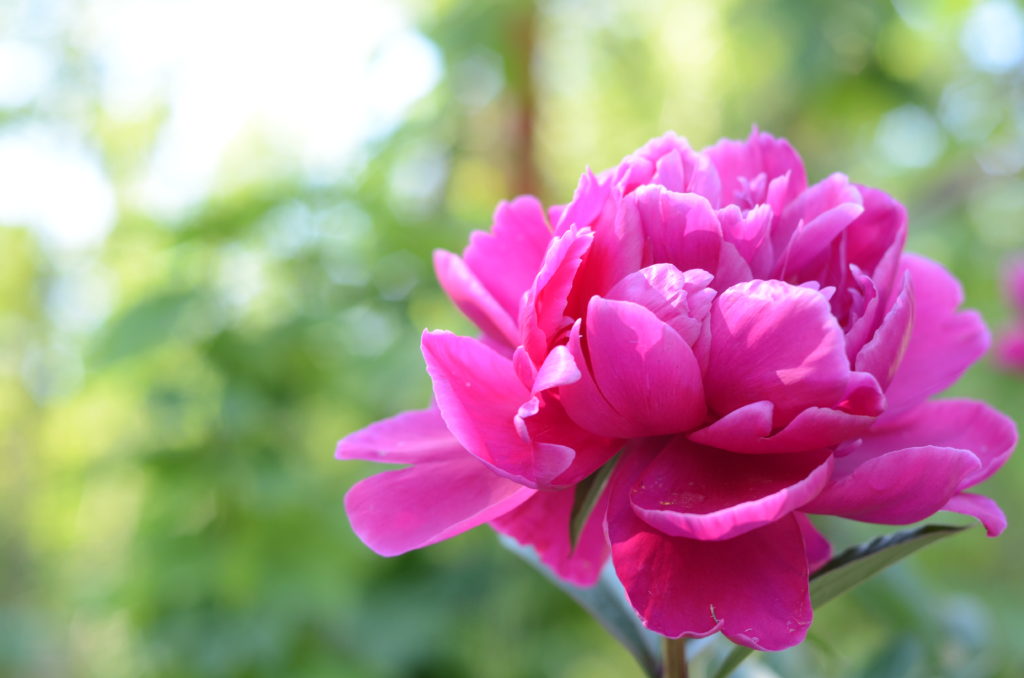
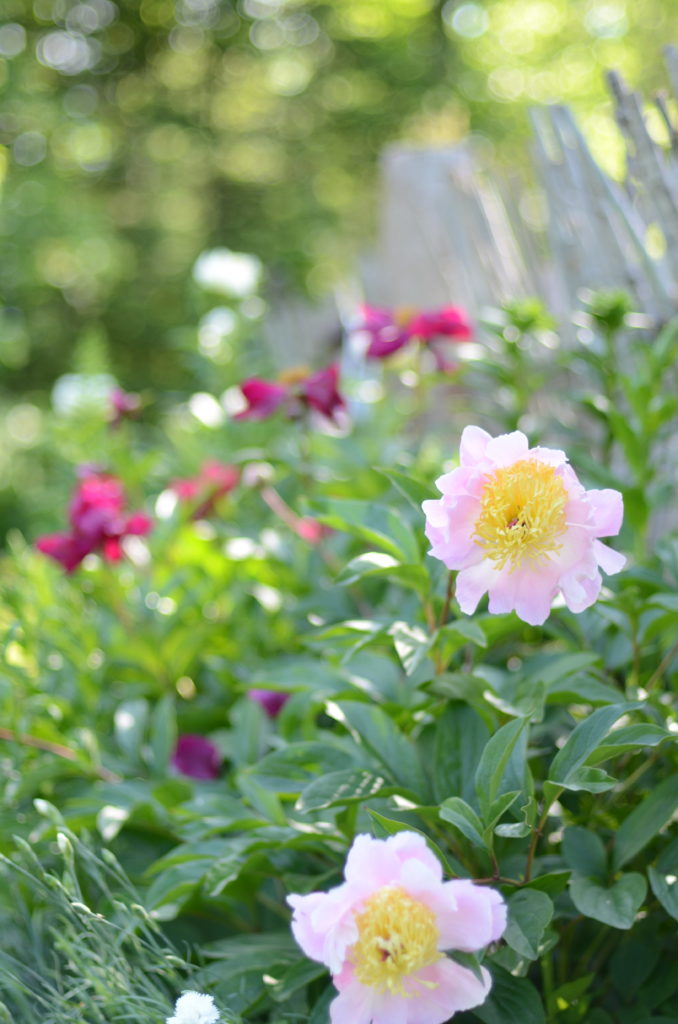
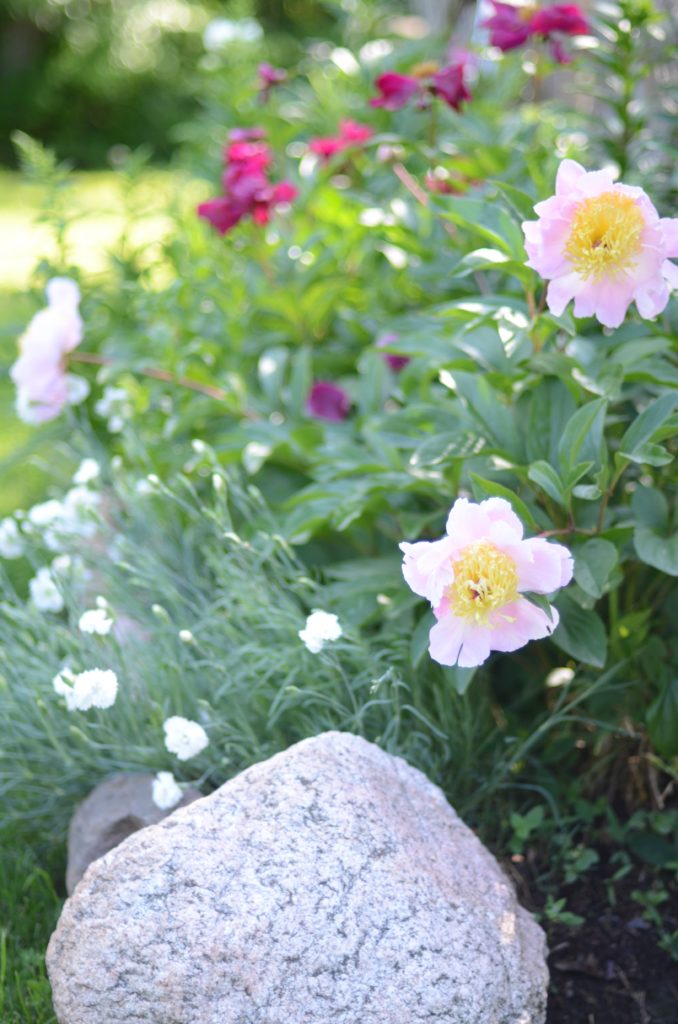
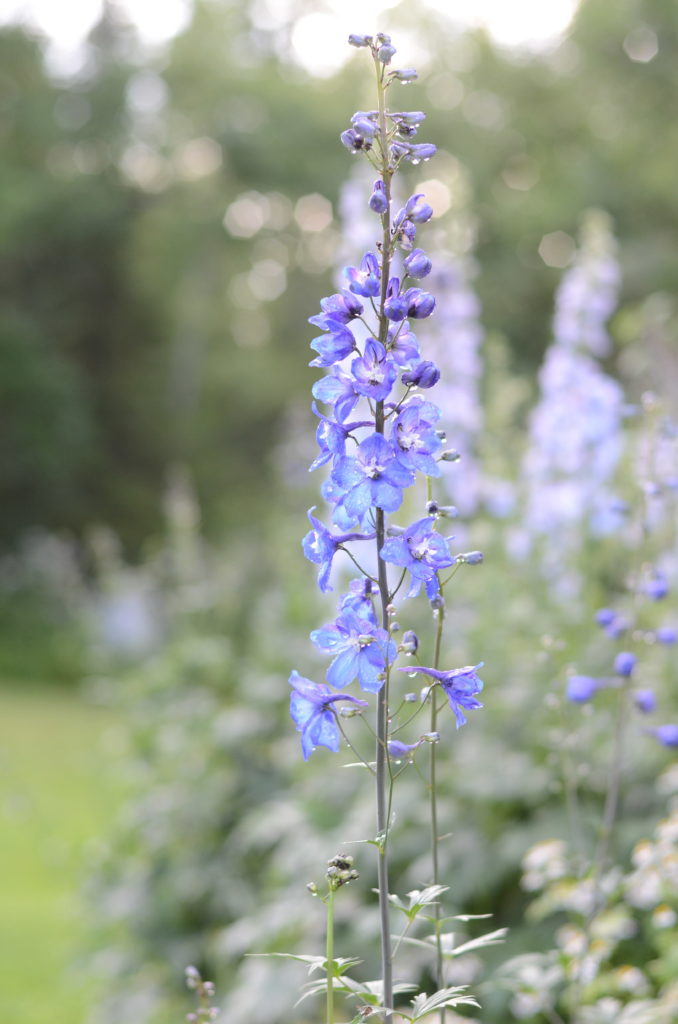
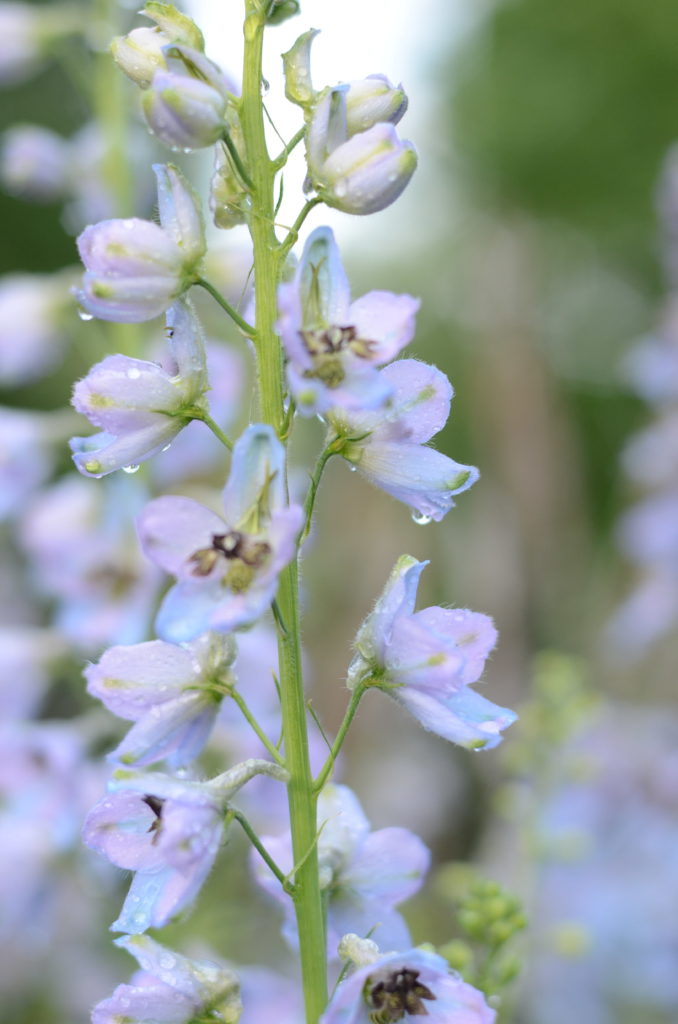
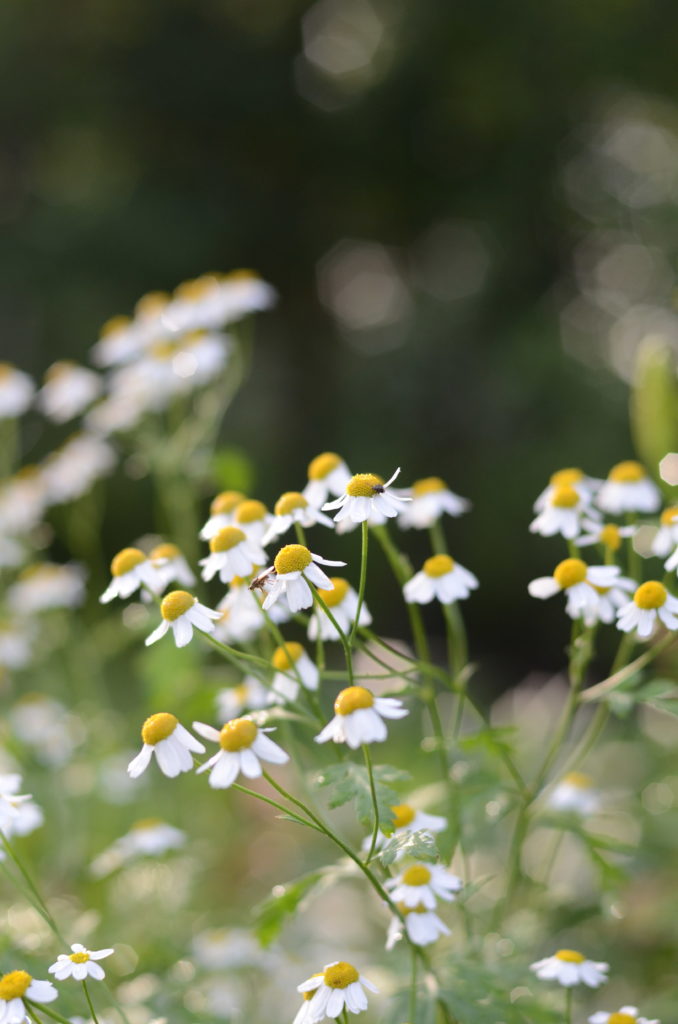
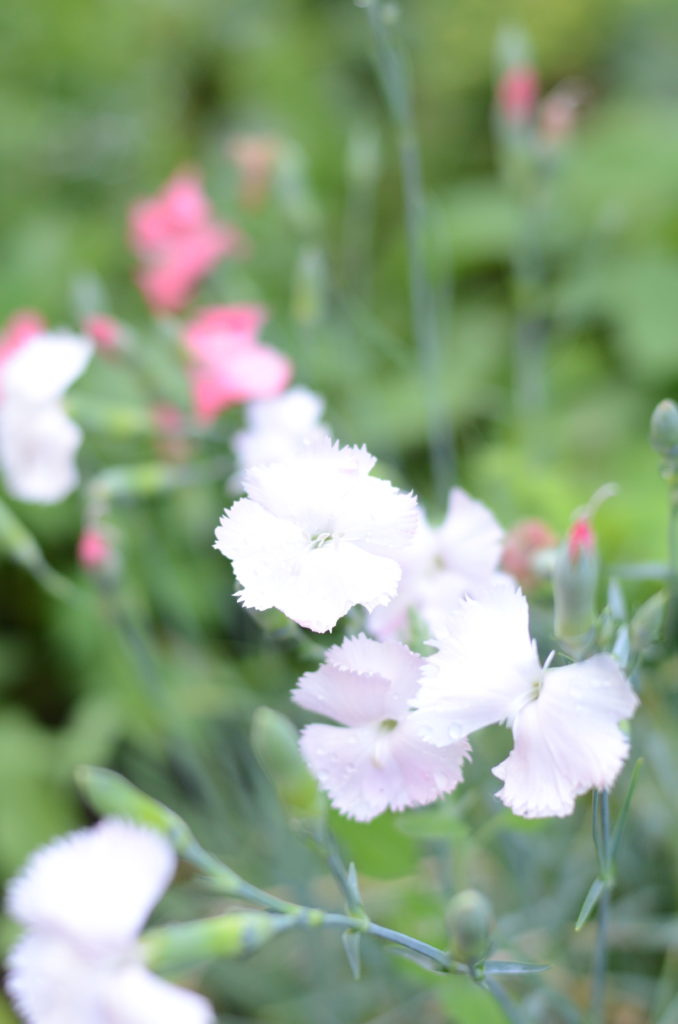
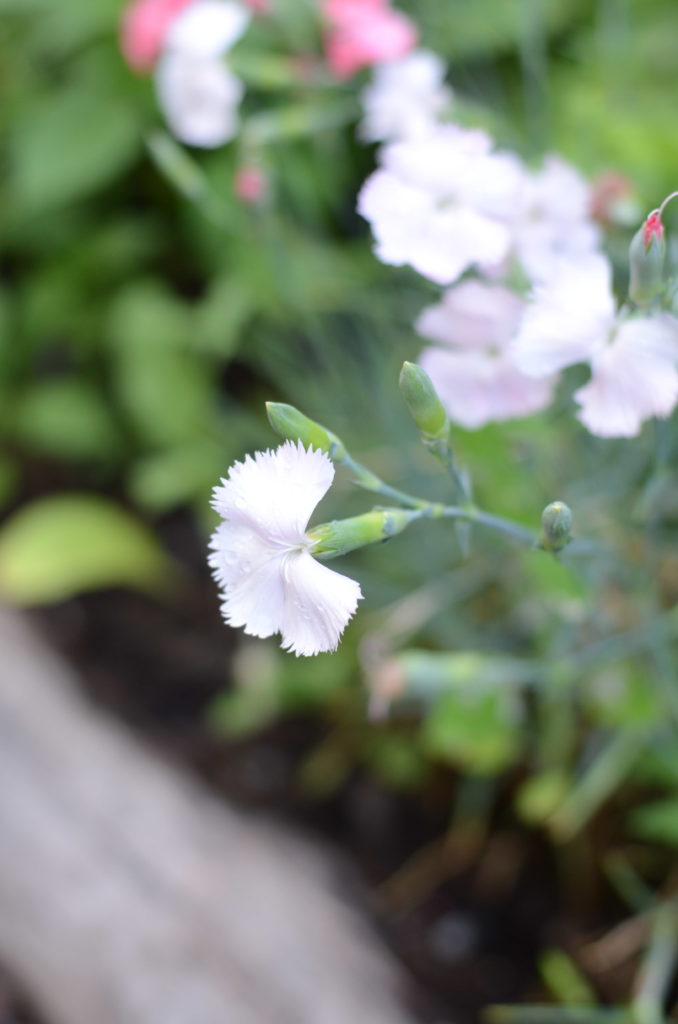
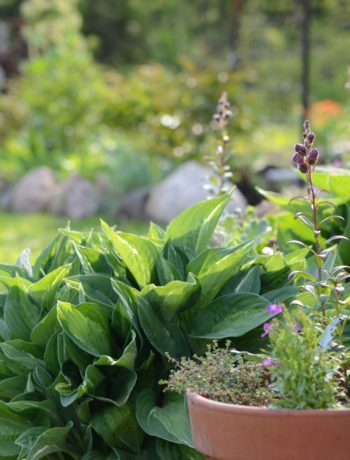
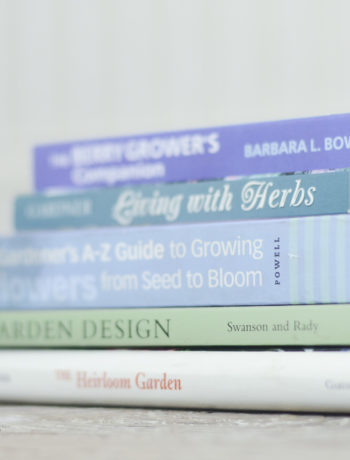
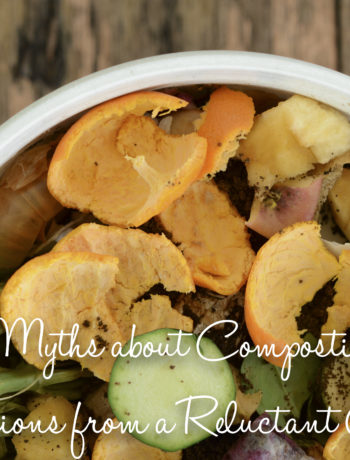
No Comments